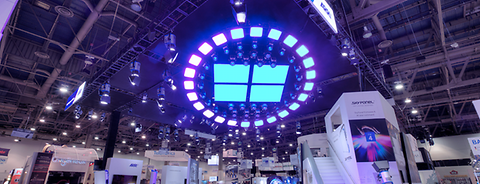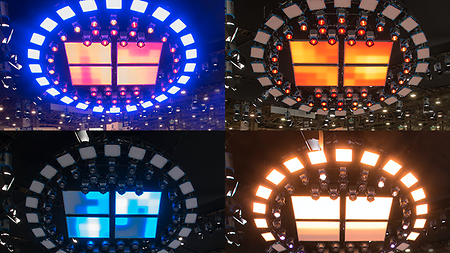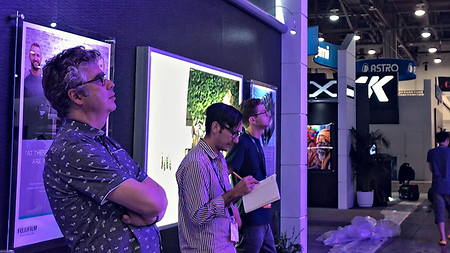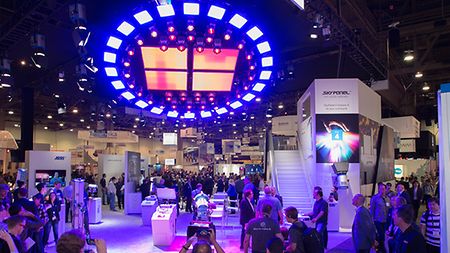After receiving positive feedback for their lighting rig at NAB 2017, ARRI’s Lighting team knew they faced a great challenge; to come up with a new show that would again inspire the show floor at the Las Vegas Convention Center. Conveniently enough, with the release of SkyPanel Firmware 4, ideas that could not have been realized before became possible for Lighting Designer Emanuel Treeson and Lighting Programmer Phil Kong. Using the rig as a second show floor, Treeson’s circle of lights hanging over the booth was pixel-mapped to be triggered by music cues and rhymes of different songs. With the total of 25 SkyPanel S30-Cs, four SkyPanel S360-Cs, 24 L5-Cs and 14 L7-Cs, new SkyPanel Firmware 4 feature Light Engine DMX Control allowed Kong to break individual SkyPanel S360-C LED engines into columns, checkerboards, larger blocks, and even into 48 individual strobes.
ARRI spoke with the talented Lighting Designer Emanuel Treeson and Lighting Programmer Phil Kong about their work on this impressive project.
What were the project scope and goals from a technical stand point?
Treeson: When Michael Wagner from ARRI Lighting approached me to design the show for NAB, he wanted to focus on the power of the new SkyPanel Firmware 4 with an emphasis on the latest SkyPanel S360-Cs in particular. From the beginning, we designed the project around these goals. I sketched a number of layouts for the ARRI team but quickly landed on the idea of a raked circle of lights that would hang over the booth like an icon. A beautiful living circle of animated light alive with a blaze of intensity and color.
What was your first reaction when you heard about the project?
Kong: This was my second year programming the ARRI booth at NAB. However, this year we were creating five different shows to five different songs. I was excited to get my hands on the new firmware and see all of the things we could do with it.



